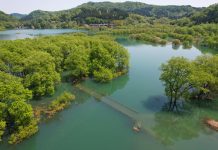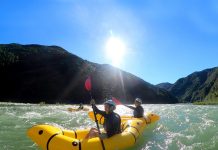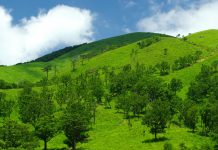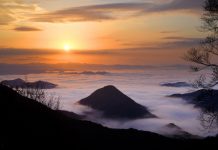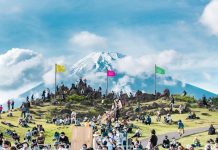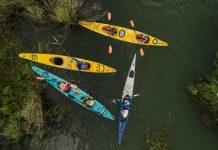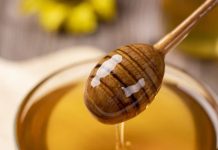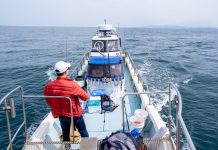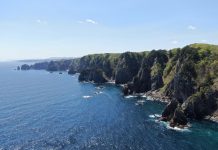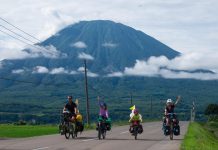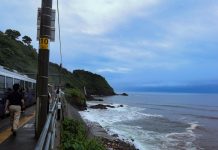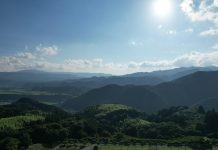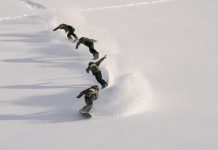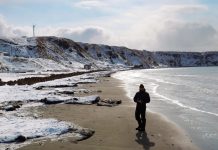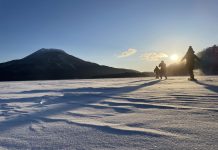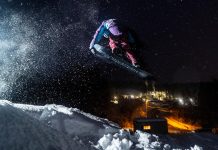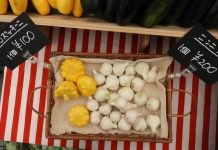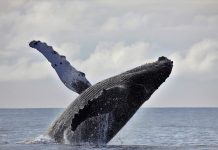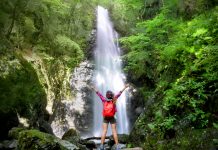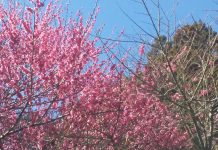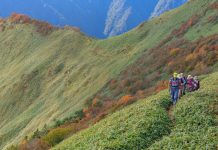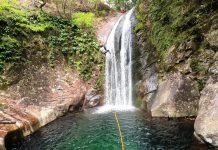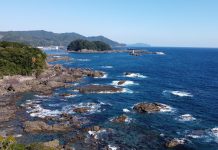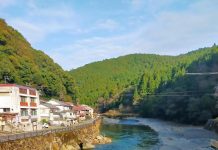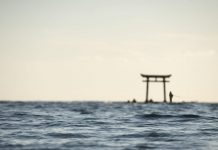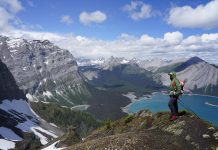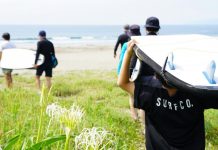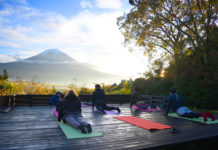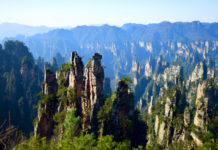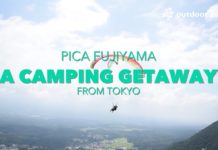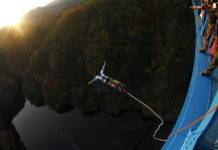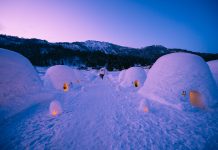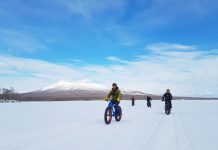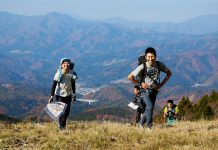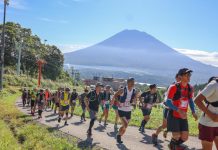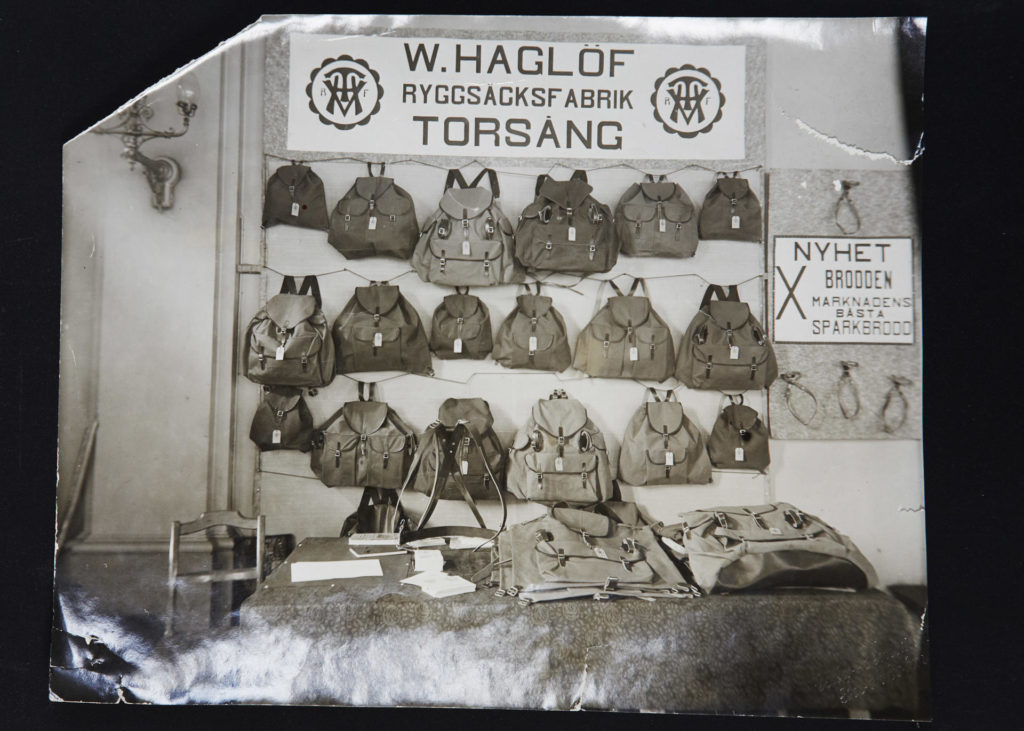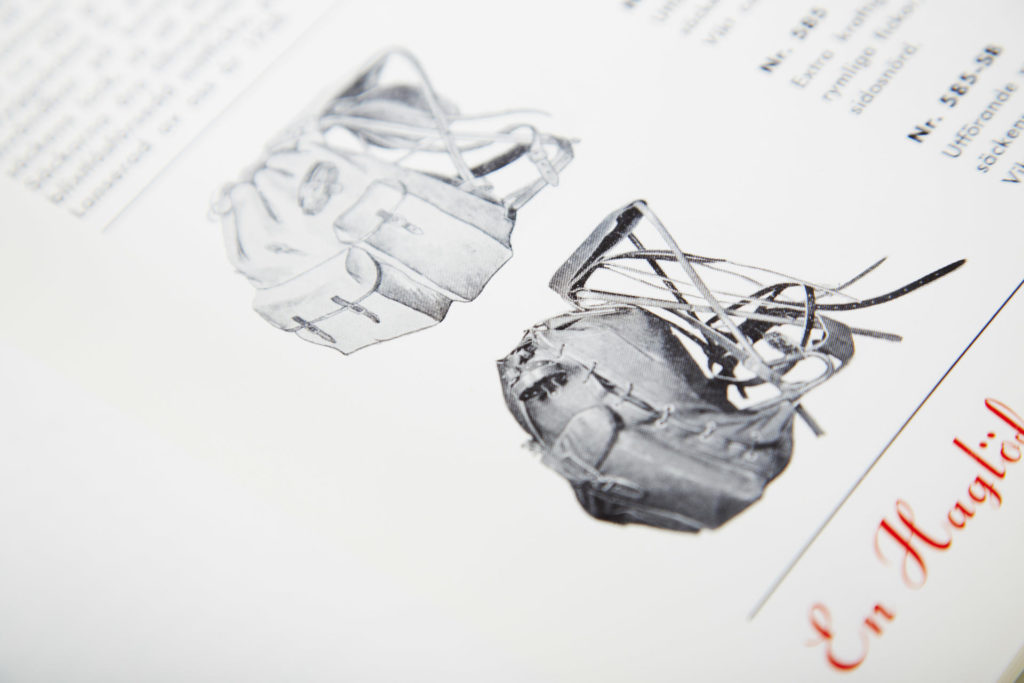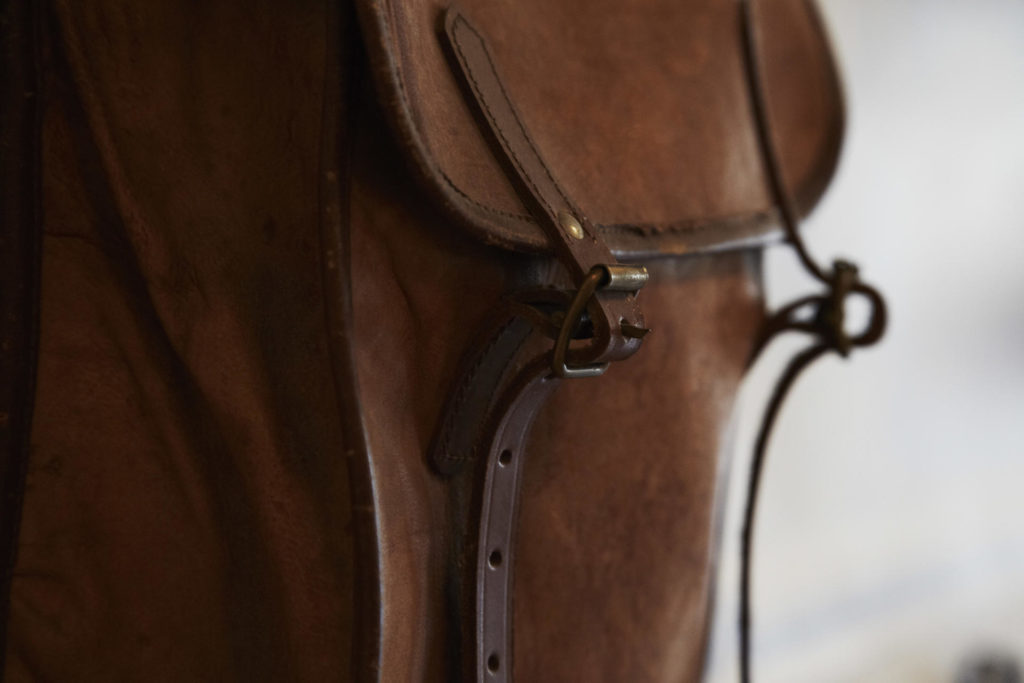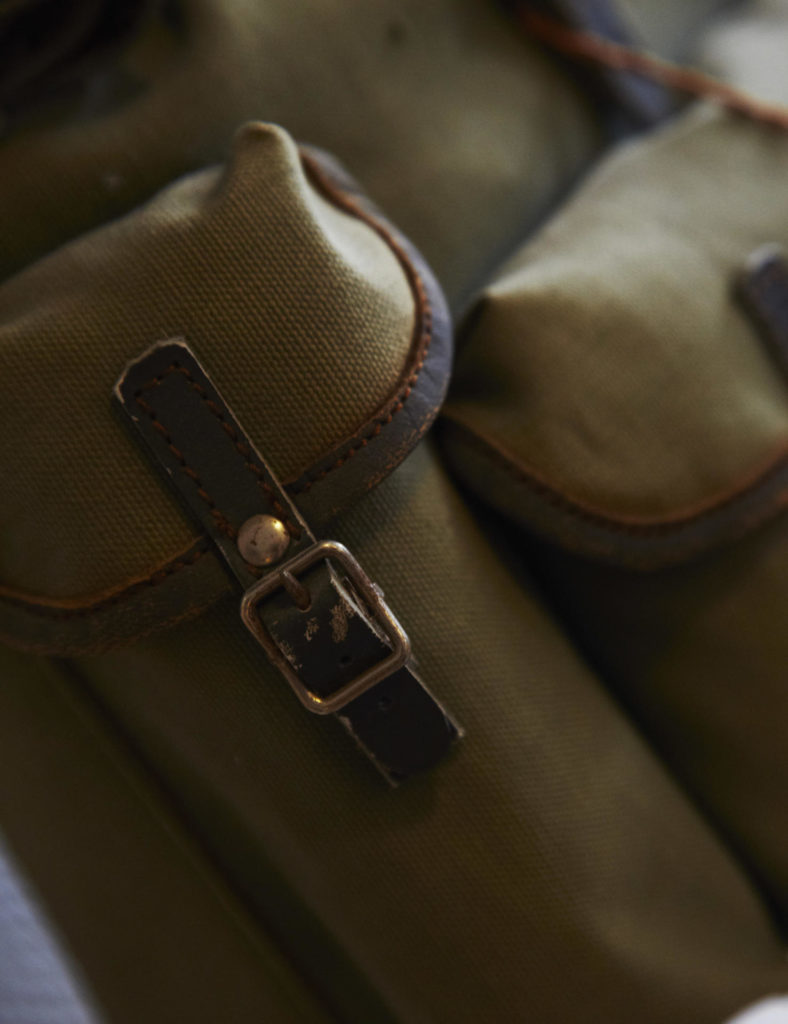In the year 1914, a lone man in a cabin in the woods—literally, a tiny shack in the Dalarna backcountry—sewed up a bunch of backpacks from the finest materials he could find, put them on his bicycle and headed out to try to sell them to the local people. Today his backpacks and high-performance jackets are worn in mountains and cities around the world, and his company looks to his roots as it celebrates a centennial milestone.
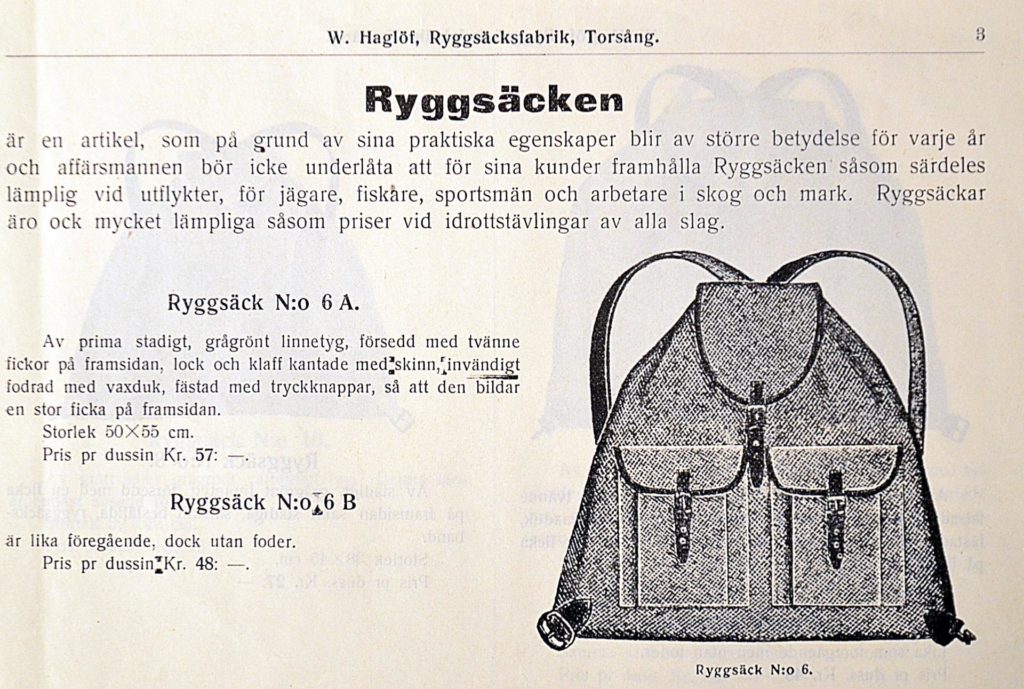
When Viktor Haglöfs succeeded in his stitching and sales efforts, he also drew from the Swedish tradition of naming the company after its hometown or province (think Husqvarna, Hestra, Sandvik or Scania) or the founder’s name (Hasselblad, or even ABBA—Agnetha, Benny, Björn and Anni-Frid).
Sweden’s most famous firm, IKEA, in fact gives you both—founder Ingvar Kamprad’s initials plus the first letters of the family farm, Elmtayrd, and his hometown, Agunnaryd.
Viktor Haglöfs chose Haglöfs, and so it was, 100 years ago, outdoor goods manufacturer Haglöfs had its humble beginnings. Today it has become one of the world’s fastest-growing outdoor brands, active not only in backpacks but also footwear and especially clothing. A major brand in Japan, it has its own retail outlets and national distribution network.
“What makes us different is we are a premium brand featuring technical gear,” says Ken Enomoto, marketing manager of Haglöfs Japan from his office in Ichigaya, Tokyo.
“The customer doesn’t have to worry about performance when using our gear. We use a very precise method in cutting our patterns from a single piece of material. It costs more, but results in a product much stronger and more beautiful. Skiers, climbers and guides all use our gear, and we use their feedback to make sure it’s even better,” Enomoto said.
For years, Haglöfs was known primarily for its tough backpacks but, in the 1980s, began to add a few tents, sleeping bags and footwear to the mix. In 1995, the company received a license to use Gore-Tex® fabric and began a line of clothing as well.
“Today backpacks and sleeping bags account for about 15 percent of our sales,” says Fredrik Kjellberg, Global Marketing Manager at Haglöfs Scandinavia AB. “Footwear accounts for another 15 percent, and clothing is now a full 70 percent.”
In Japan, a local distributor represented Haglöfs from about the time it began making clothing. Today, Enomoto says, the company is well established. “We have our own branded stores in Sapporo, Harajuku in Tokyo, Osaka and Fukuoka, as well as shop-in-shop stores around the country.”
In fact, the company is actually owned by Japanese sporting goods manufacturer Asics, although operations remain centered in Sweden.
So while Haglöfs is still in many ways an active, growing, youthful organization, it is turning 100 this year. Anniversary celebrations are a given for a major milestone such as this—and there have been events in Japan as well as in other markets—but the company decided to go back to its roots to really mark its centennial.
“We quickly agreed that, since we started with backpacks, the natural thing to do was to create a backpack that would celebrate what we have been doing for 100 years,” Kjellberg says.
“We didn’t want it just to be a retro backpack; we wanted to take inspiration from a classic old Haglöfs backpack, but produce it for the modern person. Since we started in the small village of Torsång—not even a village, really, but a farm, basically—we thought it would be really cool if we could make it in Sweden.”
The idea might have been cool, but it also turned out to be tough. There isn’t much manufacturing actually going on in Sweden these days; Haglöfs has been producing many of its products in Asia since the 1980s.
“Production was the first obstacle to work out, so we decided to hook up with the Haglöfs family,” Kjellberg says.
Rolf and Hans Haglöfs, sons of founder Viktor, actually sold the firm in 1975 and founded SACCI, a company producing mostly gear for the military.
“They have a small production facility in Sweden that can do both sewing and manufacturing. Hans Haglöfs is now in his mid-80s, but he’s there every day from 9 to 5. So he was in on the project early.”
The next problem, Kjellberg says, was materials. “No one does Velcro in Sweden today,” he says. “No one does zippers, and you can’t even find Swedish-made press buttons.”
Not at first, anyway. After a lot of searching, the material that would come together in the “Ryggsäck No. 1” (rucksack No. 1, the 100th anniversary model) slowly got sourced.
“We found a really nice leather for the straps,” Kjellberg says. “It’s an eco-friendly leather made in Sweden (at Tärnsjö Garveri, for those keeping track), which is also used by Louis Vuitton.”
They sourced felt from central-north Sweden, the fabric for the main bag, labels, D-rings and hooks and buttons and rivets from the south-central and western areas and webbing and cord from central Sweden.
“The search for the materials took us back to our roots,” Kjellberg says. “In some cases back to working with companies with whom we hadn’t worked in many years. The project also put our innovation to the test in a new way—there were lots of headaches, but the final product had a great look and feel.”
It is a great-looking bag—probably not something you’d want to take out bashing through the woods or on the next climb, though. Soft blue fabric, embossed leather straps and slightly old-fashioned—but fashionable—hooks and buttons.
The bag even has a label that tells from where all parts of the bag came, and a place where several generations of users can write their names and the dates when they used it. Each of the limited edition run of 1,000 bags is hand-numbered as well, by Hans Haglöfs himself.
“Hans Haglöfs put in all the rivets himself and is numbering them all by hand,” Kjellberg says with a smile. “He and his sons live right there on the production site, so he’s been hands-on the whole way through. It’s been very exciting for us to reconnect with them through this project.”
Haglöfs may be celebrating its long history with the Ryggsäck No. 1 but, again, it is also a company growing and looking to the future.
“We’re focusing intently on sustainability and environmental issues,” Kjellberg says. “We’re a company made up of outdoor people, so obviously we are concerned about the environment, perhaps more so than average people. We really need to change the process of how things are made, and we are constantly pushing the limits in this.”
This is the first season, he says, in which Haglöfs will label the products where it has progressed the most in this area.
“There are few industry standards at this time, but there are criteria that are being more commonly used,” he says. “One is bluesign®, an industry standard aimed at reducing and replacing potentially harmful chemicals. Another covers the use of organic cotton, and one more recycled materials.
“Any product that covers these three criteria is marked with our ‘Take Care’ label,” he continues. “By placing this label on our products, we feel consumers can make more sustainable choices.”
With Haglöfs, he adds, it won’t be hard to make that choice: some 60 percent of all 2014 products are already marked with the Take Care symbol, with even more coming next year.
“We’re also working hard on innovation, which goes hand-in-hand with sustainability,” Kjellberg adds.
For Japanese consumers, Ken adds, there are some exciting developments for the 2016 season. “We’ll be providing more products with Asian sizing, such as shorter sleeve lengths.”
But those who appreciate Haglöf’s larger, European roots shouldn’t worry. “We’re keeping the entire lineup,” he promises.

